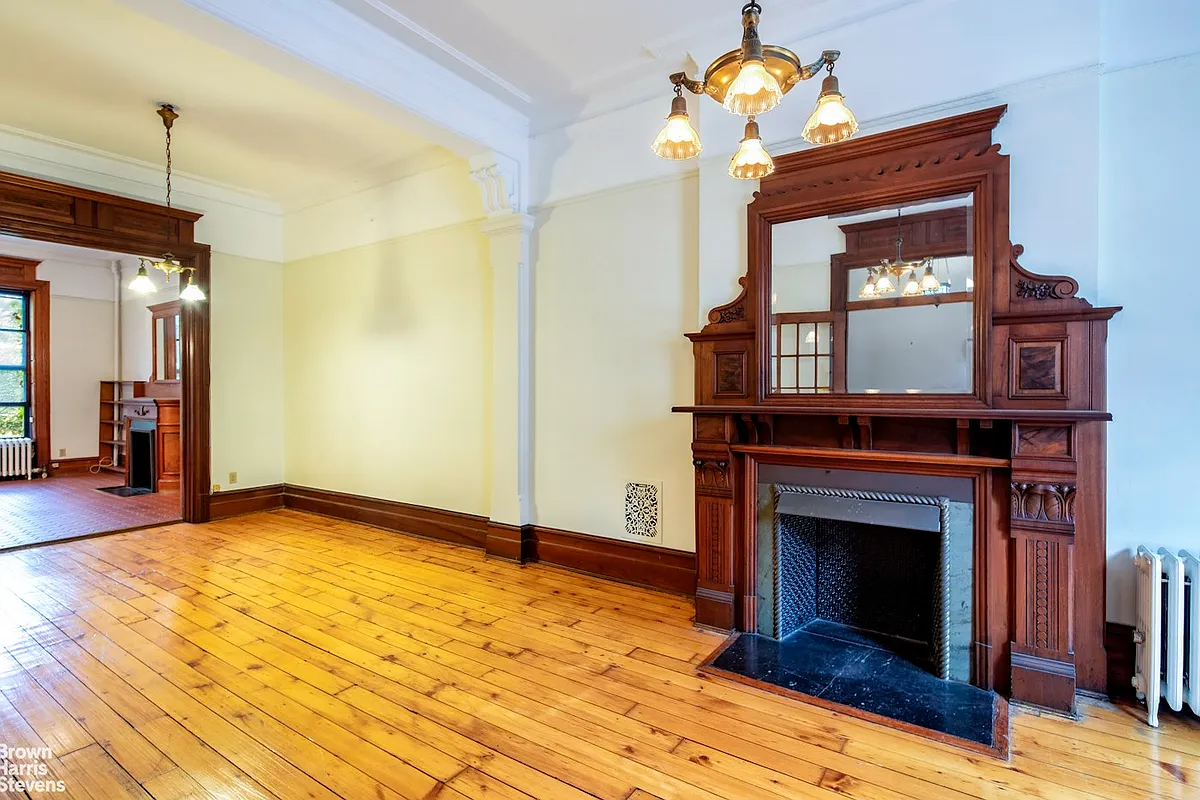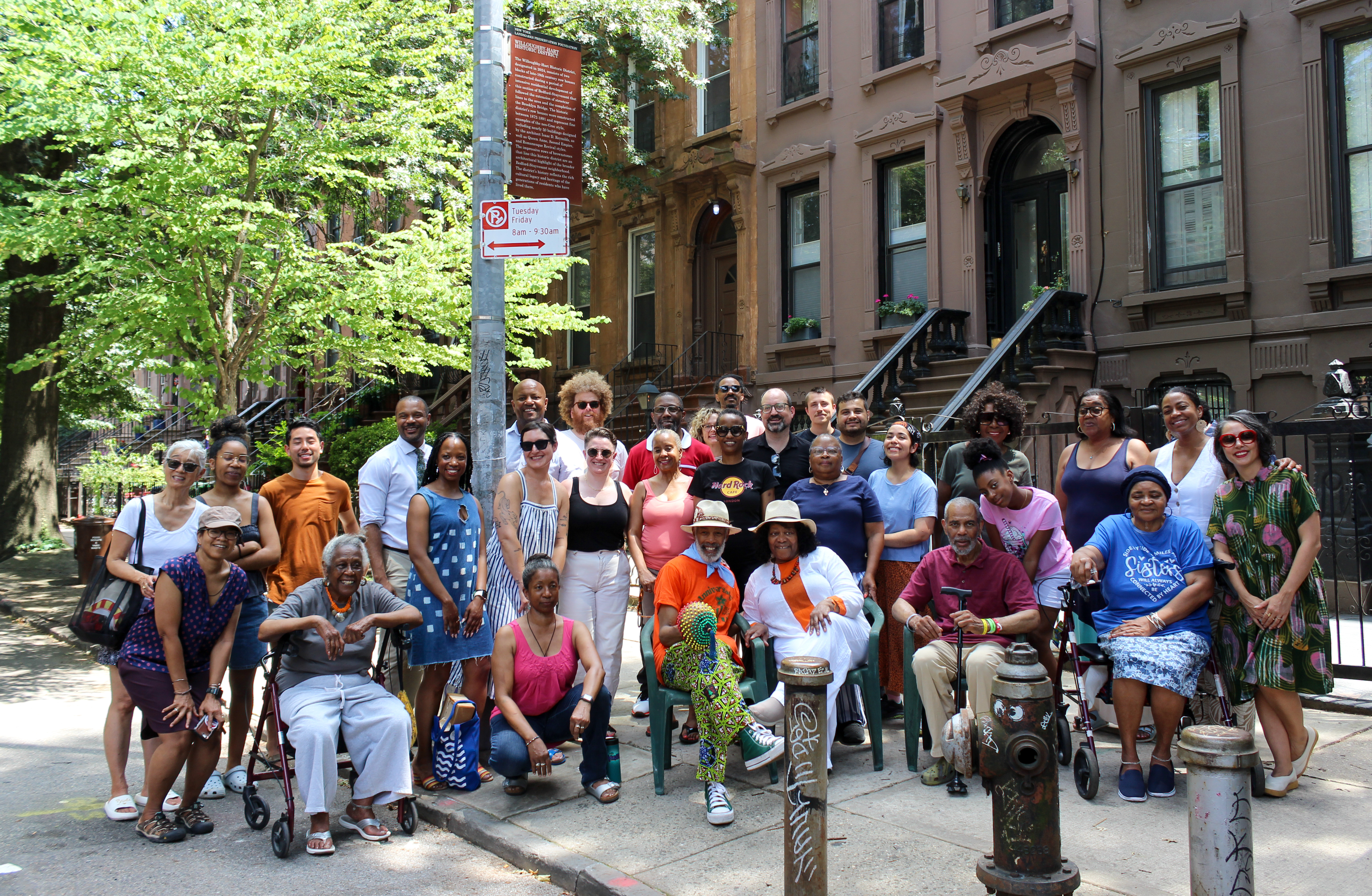Building of the Day: 154 Broadway
Brooklyn, one building at a time. Name: Former Meyer’s Bakery and Lunch Room Address: 154 Broadway Cross Streets: Bedford and Driggs Avenues Neighborhood: Williamsburg Year Built: Unknown Architectural Style: Neo-Grec Architect: Unknown Landmarked: No The story: Broadway was the heart of business and banking in Williamsburg, prior to the building of the bridge, which began…

Brooklyn, one building at a time.
Name: Former Meyer’s Bakery and Lunch Room
Address: 154 Broadway
Cross Streets: Bedford and Driggs Avenues
Neighborhood: Williamsburg
Year Built: Unknown
Architectural Style: Neo-Grec
Architect: Unknown
Landmarked: No
The story: Broadway was the heart of business and banking in Williamsburg, prior to the building of the bridge, which began in 1896, and was finished in 1903. In addition to the fine banks and large commercial buildings on Broadway, there were lots of smaller brick and brownstone buildings holding smaller companies and businesses, such as law firms, accountants, architects and more, all proud to be on this premiere thoroughfare. The building of the bridge opened Williamsburg up to millions of new residents, new businesses and traffic, but it also spelled the end of lower Broadway’s pre-eminence.
From the ornament and other details, 154 Broadway was probably built when the Neo-Grec style of architecture was king. That puts in the 1870’s to early 1880’s. The building is a handsome brick structure, with retail space on the ground floor, and office or residential space above. As we can see from photographs as recent as 2006, the building next door, at 152 Broadway was its twin, perhaps even 150, as well, way back when. Aside from alterations to the retail space, this building still has most of its original detail left, most notably, the banded limestone and brick façade, the limestone lintels and ornamental sills, and the ornate cornice.
In 1900, the retail space was the home of Meyer’s Bakery and Lunch Room. They made the papers on April 16, 1910, when Conrad De Fiebre, the foreman of the bakery, was harassed by a local patrolman, named George Thompson, who chased him down the street and hit him with his night stick, allegedly for only inquiring as to why the policeman was in his cellar, especially that early in the morning. Thompson was charged with assault, but fled to Chicago, where he was later apprehended. He had only been a policeman for a year and was 24 years old.
Meyer’s weathered the storm of now being off the beaten path, at least for ten or more years, and it probably didn’t hurt to be down the block from Peter Lugar’s. But most of the smaller stores and businesses on this stretch of Broadway began to feel the shadow the bridge, as traffic emptied out much further up on Broadway. The commercial buildings began to be less retail oriented. By the 1980’s, when new tax photos were taken, the building was quite run down, and was home to Empire City Meats. Up until recently, and perhaps still, the ground floor space was the home of the Intercontinental Casing Company, purveyors and manufacturers of sausage casings and products. They are still listed at this address in the Yellow Pages and other directories.
Today, with the enormous popularity of Williamsburg, this building has joined most of the others on this strip as an expensive condo development, with four units. Next door, once a twin to this building, has been totally redone, and no longer resembles this building at all. Let’s hope this one stays just the way it is. GMAP









very nice.
the graceful elliptical arched lintel for the storefront was probably put in circa 1900 (the Art Nouveau period) perhaps by the bakery you mention.
Scumptious,that olive colored stone, isn’t it? 1888: John Tietjen, liquors.
The Rt. Hon. Minard overestimates, in my opinion, the architectural sophistication of noble Kings County, or at least noble Williamsburg. By 1900 far from the empty trappings of fashion, the ‘Burg, I think, is a most unlikely landing place for the liberty style. The arched opening over the storefront is, as wber notes, a bow-string truss, where the horizontal spread-strain of the wall it supports is held together by said bow-string, which was often threaded on each end (or in the middle) for tightening. That type of bow-string truss relied on the advent of steel members (1890+) because a cast-iron “string” would fail – cast-iron is good in compression, but not in tension. (Which is why someone with a “cast-iron stomach” is often subject to headaches.)
Don’t I sound like a know-it-all? Well, get used to it.
PS Is this another one of those projects where the Heroic Wife was the developer, leaving Timid Hubby at home?
The “string” being, as wber refers to it, a tie rod.
wber, are you sure there is no tie-rod here? then it is not a bow string truss. perhaps it is a machine gun arch. or a hockey stick -beam
anyways, MM made me say that.
He was just listed there in the city directory. And don’t get snippy with me, missy, or I’ll come out to Brooklyn again and write about, oh … an art nouveau building on Union Street. So there.